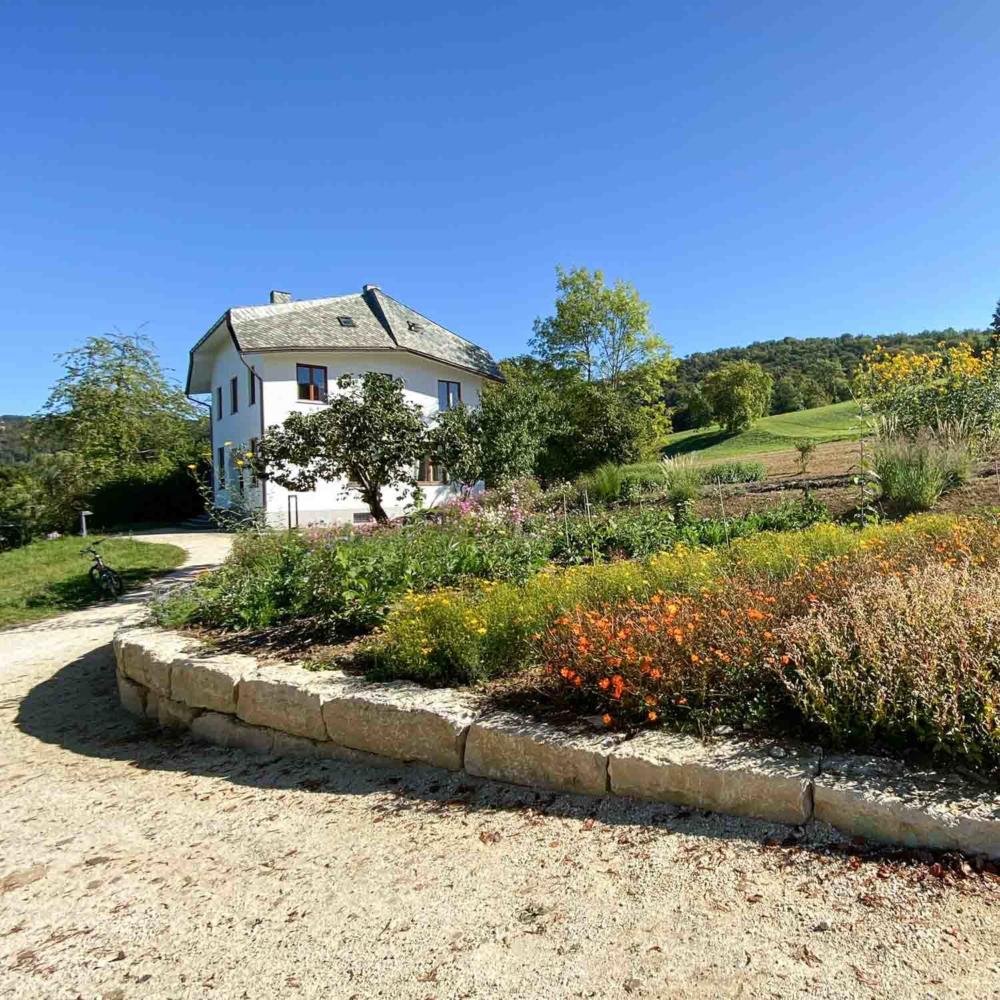New beds for dye plants and cut flowers
The Goetheanum Garden Park is being continually developed. Most recently, the dye plant and cut flower gardens were relocated and a pond was created. Benches invite visitors to rest and enjoy the views across to Basel and France.
“Before relocating any part of a garden one has to consider the new location,” says Benno Otter, the coordinator of the Goetheanum garden department. For the gardeners this meant having a thorough look at the new location for the dye plants and cut flowers between Haus Schuurman and the Kepler Observatory.
Benno Otter explains, “you can see from here how the Goetheanum is moulded in the Jura landscape.” The elevated position offers views towards France and Basel. It seemed only logical to set up additional benches for visitors to linger. The benches are made from the wood of the cedar tree that had to be felled in the Garden Park in March 2022.
“The relocation was necessary for various reasons. An oak tree near the dye plant garden has extended its nutrient catchment area. “The cut flowers anyway change their location every eight to ten years to prevent soil depletion,” says gardener Paul Saur. In addition, a new place needed to be found for the compost heap because of plans to build a pavilion for the preparations. Since the upper part of the garden park was no longer needed as a private garden, it seemed the ideal place for the dye plants and cut flowers.
The new beds have been enclosed by a wall. Benno Otter points out how the wall starts at ground level and gradually reaches knee-height to serve as a support for the bed. “It seems as if the soil were coming towards you.” The bed is spread across two terraces which creates width towards the front and a kind of protection towards the back. A small pond was created as an additional feature.
The dye plants are actually used for dyeing, most recently on the occasion of the World Goetheanum Conference, for the fabric of the Goetheanum Thonet S33 cantilever chair. Goetheanum gardener Rob Bürklin also offers plant dyeing courses.
Further planned additions to the Goetheanum Garden Park in the coming years include a preparation pavilion, a bee sculpture and a greenhouse. The exhibition space ‘The Discovery of Wholeness – Metamorphosis and Organism as Principles of Life’ in the Goetheanum‘s Glasshouse is already open to the public.
English by Margot M. Saar
Web Goetheanum Garden Park (German)
Web Opening hours exhibition ‘The Discovery of Wholeness’ (German)
Cover image Goetheanum Garden Park: New location for the beds of 'Dyer Plants' and 'Cut Flowers' (Photo: Sebastian Jüngel)

